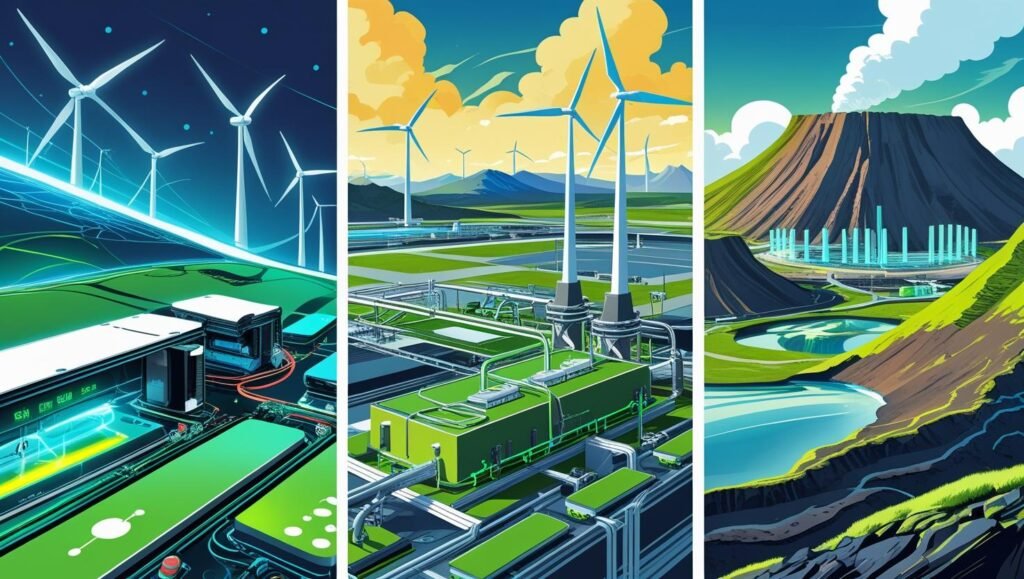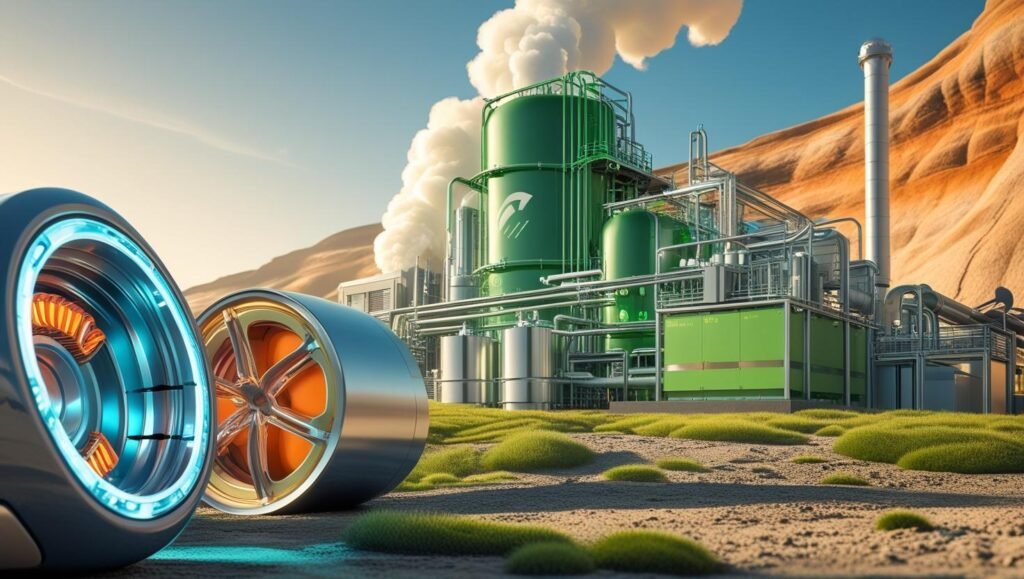The global push for sustainable technology has never been more urgent. With increasing climate concerns and a finite planet, green technologies are widely touted as essential solutions to our environmental woes. From solar panels to electric vehicles, these innovations promise a cleaner, greener future. But as we move deeper into 2025, a critical question emerges: Is the sustainability of green technologies truly assured in the long run? A thorough examination, including their entire lifecycle and broader environmental impact, is crucial to determine if we are genuinely building a sustainable future or merely shifting environmental burdens.

Understanding the Lifecycle of Green Technologies
The true sustainability of any technology isn't just about its operational phase – the years it spends generating clean energy or reducing emissions. It encompasses its entire “cradle-to-grave” or even “cradle-to-cradle” journey. This “Green Technology Lifecycle” includes:
- Raw Material Acquisition: The extraction of minerals, metals, and other resources (e.g., lithium and cobalt for batteries, rare earth elements for magnets in wind turbines). This stage can involve significant habitat destruction, energy consumption, and pollution if not managed responsibly Source: Climate.Sustainability-Directory.com – Green Technology Lifecycle.
- Manufacturing and Processing: The energy and resources consumed to transform raw materials into finished products. This phase can be energy-intensive and generate waste, requiring green manufacturing practices to minimize impact Source: ResearchGate – Environmental impact of conventional manufacturing, green manufacturing initiatives.
- Transportation: The carbon emissions associated with moving raw materials, components, and finished products across global supply chains.
- Operational Use: The period during which the technology performs its intended function, ideally with minimal to zero emissions (e.g., a solar panel generating electricity, an EV running). This is where the primary “green” benefit is realized.
- End-of-Life Management: The disposal, recycling, or repurposing of the technology. Improper disposal can lead to soil and water contamination, while effective recycling can recover valuable materials and reduce the need for virgin resources.
A Life Cycle Assessment (LCA) is a crucial methodology used to systematically evaluate the environmental impacts associated with all stages of a product's lifecycle, providing a data-driven approach to quantify impacts across various categories like carbon footprint and resource depletion Source: Ecochain – Life Cycle Assessment (LCA) – Everything you need to know.
The Challenges to Long-Term Sustainability
While the benefits of green technologies are immense, several factors pose challenges to their absolute sustainability in the long run:
- Resource Intensity: Many green technologies rely on specific minerals and rare earth elements (e.g., neodymium for wind turbines and EVs) whose extraction can be environmentally destructive and geopolitically sensitive. The long-term availability and responsible sourcing of these materials are critical concerns.
- Energy for Production: Manufacturing green technologies, particularly batteries and complex electronic components, can be energy-intensive. While this energy demand is decreasing and increasingly being met by renewable sources, it's a significant factor in the overall footprint.
- Recycling Infrastructure: The lack of robust global recycling infrastructure for complex green tech components (like EV batteries or solar panels) remains a challenge. If these technologies simply end up in landfills, their long-term environmental benefit is significantly diminished. Innovations in circular economy principles are vital here Source: Infosys BPM – Green manufacturing's role in creating a sustainable future.
- E-Waste: As with all modern electronics, the potential for e-waste from rapidly evolving green tech (e.g., smart home devices, older EV batteries) needs proactive management and design for disassembly.

Promising Developments and Long-Term Viability
Despite these challenges, the trajectory of green technology sustainability is overwhelmingly positive, driven by continuous innovation and increasing global commitment:
- Technological Advancements: Research and development are rapidly improving efficiency, reducing material requirements, and enhancing recyclability. For example, battery technologies are evolving to reduce reliance on critical minerals and improve lifespan.
- Circular Economy Principles: Industries are increasingly adopting principles of the circular economy, focusing on designing products for longevity, repair, reuse, and high-value recycling. This minimizes waste and maximizes resource efficiency.
- Policy and Regulation: Governments worldwide are implementing stricter environmental regulations, offering incentives to buy sustainable green tech, and investing in research and infrastructure for a circular economy. This creates a more favorable environment for truly sustainable solutions.
- Corporate Commitment: Leading companies are embedding sustainability throughout their operations. For instance, General Electric (now GE Vernova), a major player in renewable energy, has committed to significant decarbonization and circularity goals. Their 2024 sustainability report highlights progress in electrifying and decarbonizing the world, with investments in grid innovation, hydrogen-ready gas turbines, and carbon capture technologies, ensuring their products are designed with lifecycle impacts in mind Source: Sustainability Magazine – GE Vernova's Sustainability Report on Energy, AI & Emissions.
- National Initiatives: Countries like Germany, a pioneer in green tech, continue to invest heavily in renewable energy and sustainable industrial practices. Germany's focus on high-value, specialized clean tech (like offshore wind, green hydrogen, and advanced battery chemistries) aims to ensure long-term economic growth alongside environmental stewardship, even as it navigates political complexities Source: Atlantic Council – How Merz can leverage Germany's green transition for growth and security.
Conclusion: A Journey Towards True Sustainability
Are green technologies really sustainable in the long run? The answer is a resounding “yes, but with continuous effort and evolution.” No technology is entirely impact-free, but sustainable technology is designed to minimize harm compared to conventional alternatives across its entire lifecycle. The initial environmental costs of manufacturing green tech are increasingly offset by their long-term operational benefits, especially as energy grids become cleaner and recycling processes improve.
To truly find sustainable tech solutions, we must continue to:
- Invest in research for more efficient materials and production processes.
- Develop robust global recycling and circular economy infrastructure.
- Implement strong policies that incentivize sustainable practices from raw material sourcing to end-of-life management.
- Support companies that demonstrate genuine commitment to the full lifecycle sustainability of their products, such as those in General Electric renewable energy efforts or the ambitious Germany green tech initiatives.
Ultimately, green technology sustainability is not a static destination but a dynamic journey. By critically evaluating and continuously improving these innovations, we can ensure they deliver on their promise of a truly sustainable and resilient future for generations to come, providing clean, sustainable energy and mitigating climate change impacts.
The green-technology race, while necessary, is not sufficient. Without addressing consumption, equity, and policy reform, it risks becoming a detour instead of a destination. Technology is a tool, not a solution — and if we continue racing without rethinking our trajectory, we may run out of time before we reach the finish line.
If you’re interested in learning how green tech can work when aligned with sustainability principles, check out our companion piece: Building a Better World with Green Technology.
And don’t forget to comment below on what aspects of green innovation you’d like us to cover next!








